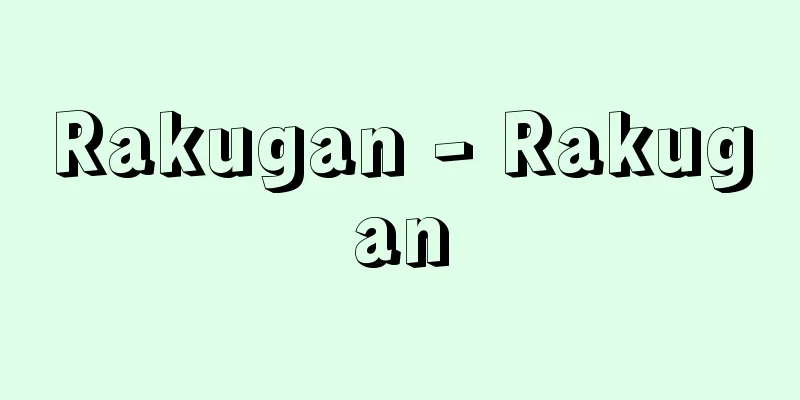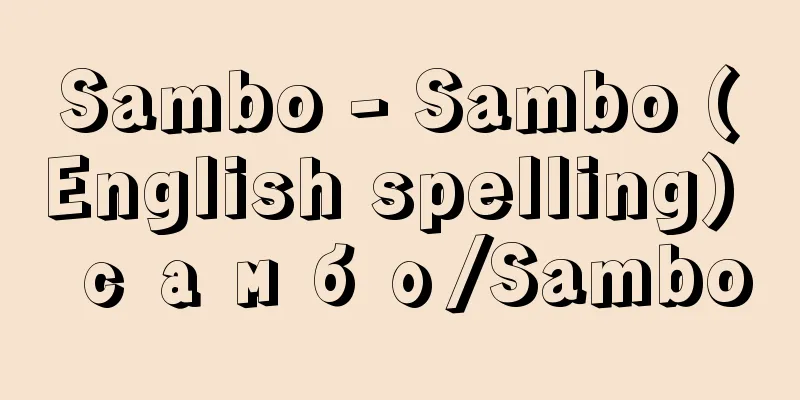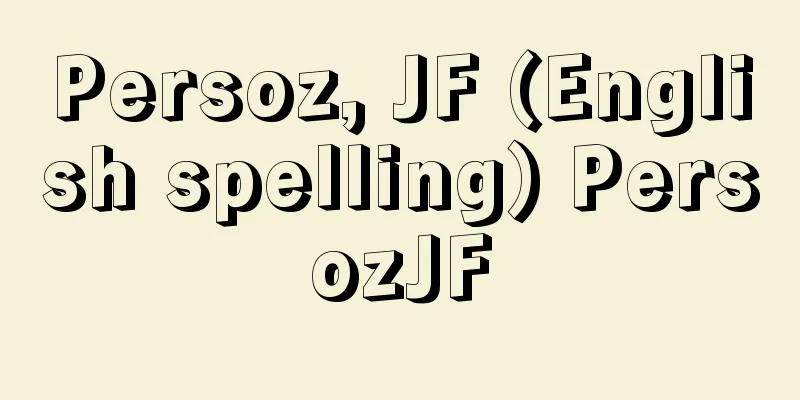Rakugan - Rakugan

|
A type of dried confectionery, it is also called uchigashi or uchimono confectionery. It is made by grinding glutinous rice, non-glutinous rice, buckwheat, soybeans, red beans, barley, wheat, etc., adding sugar and starch syrup, kneading, pressing into a mold, and drying in a roasting oven. The name rakugan is said to have come from the Chinese name for a confectionery, nanrakukan. In "Zhuzi Danki," published in 1708 (5th year of the Hoei era), nanrakukan is said to be the name of a cake, which suggests that originally it was in the form of hakusekko, and was literally a soft rakugan. Rakugan was created during the Bunmei era (1469-1487) by Itakura Jibu, a resident of Mibu, Yamashiro Province (Kyoto). It is a confectionery made by steaming glutinous rice, exposing it to sunlight, pounding it in a mortar, adding sweetness, and sprinkling black sesame seeds on the surface of a square piece of dough measuring one inch. Jibu presented it to Emperor Go-Tsuchimikado, who named it "rakugan" because he likened the appearance of the confection to a scene of wild geese dancing down on white snow. In honor of the presentation, the confectionery was given the name Gosho Rakugan. This confectionery spread to the northern provinces as Jibu followed Honganji Rennyo, and is now a specialty of Nanto City, Toyama Prefecture. Furthermore, in 1625 (Kan'ei 2), "Choseiden" was completed in Kanazawa City, Ishikawa Prefecture, and was considered the highest quality rakugan. Today, it is an elegant confectionery made with wasanbon sugar. Famous rakugan include Ochiyobou in Kyoto City, Nininshizuka in Nagoya City, soba rakugan from Obuse Town, Nagano Prefecture, bean rakugan from Tsuruga City, Fukui Prefecture, barley rakugan from Tatebayashi City, Gunma Prefecture, Hatsukariganjou in Kawagoe City, Saitama Prefecture, and Akita Morokoshi in Akita City. Other examples of soft rakugan include Kousakou in Nagasaki City, Yamakawa and Natane no Sato in Matsue City, Shimane Prefecture, Koshi no Yuki in Nagaoka City, Niigata Prefecture, and Shiogama in Shiogama City, Miyagi Prefecture. [Fumio Sawa] [Reference items] | | | | | | | | | | | | | |Japanese |Gunma Prefecture ©Gunma Prefecture Tourism and Products Division "> Barley Rakugan Akita Prefecture ©Shogakukan "> Akita Miyagi Prefecture © Miyagi Prefecture Tourism Division "> Shiogama Source: Shogakukan Encyclopedia Nipponica About Encyclopedia Nipponica Information | Legend |
|
干菓子の一種で打(うち)菓子、打物(うちもの)菓子ともいう。糯米(もちごめ)、粳米(うるちまい)、そば、大豆、小豆(あずき)、大麦、小麦などを製粉し、砂糖、水飴(みずあめ)などを加えて練り、型に入れて押し、焙炉(ほいろ)で乾燥させたもの。落雁の名は中国の菓子名の軟落甘(なんらくかん)からとったといわれる。1708年(宝永5)刊の『朱子談綺(だんき)』に、軟落甘は糕(こう)の名であるとされているところからも、当初は白雪糕(はくせっこう)の形態であり、文字どおり軟らかい落雁であった。落雁は文明(ぶんめい)年間(1469~1487)に山城(やましろ)国壬生(みぶ)(京都)の住人板倉治部(じぶ)によりつくられた。糯米を蒸し、陽光にさらして臼(うす)で搗(つ)き、甘味を加えた一寸四方の打物の表面に黒ごまを散らした菓子で、治部はこれを後土御門(ごつちみかど)天皇に献上し、帝(みかど)は菓子の姿を白雪に雁(がん)の舞い下りた風景に見立てたので、「落雁」と名づけられたという。また献上の栄誉をたたえて御所落雁の菓名となった。この菓子は治部が本願寺蓮如(れんにょ)に従ったことから北国に伝わり、いまでは富山県南砺(なんと)市の名物である。さらに1625年(寛永2)には石川県金沢市の「長生殿」が完成して、落雁では最高級とされた。今日では和三盆糖を用いた典雅な菓子である。有名落雁には京都市のお千代宝(ちよぼう)、名古屋市の二人静(ににんしずか)、長野県小布施(おぶせ)町のそば落雁、福井県敦賀(つるが)市の豆落雁、群馬県館林(たてばやし)市の麦落雁、埼玉県川越市の初雁城(はつかりじょう)、秋田市の秋田諸越(もろこし)がある。また軟落雁では長崎市の口沙香(こうさこう)、島根県松江市の山川、菜種の里、新潟県長岡市の越乃雪(こしのゆき)、宮城県塩竈(しおがま)市の「しおがま」などがあげられる。 [沢 史生] [参照項目] | | | | | | | | | | | | | | | |群馬県©群馬県観光物産課"> 麦落雁 秋田県©Shogakukan"> 秋田諸越 宮城県©宮城県観光課"> しおがま 出典 小学館 日本大百科全書(ニッポニカ)日本大百科全書(ニッポニカ)について 情報 | 凡例 |
Recommend
Chemistry
The International Union of Pure and Applied Chemi...
Calamites (English spelling)
A representative genus of the ferns in the Loborac...
Alfonso VI
1040‐1109 King of Leon (reigned 1065-1109) and of ...
Eisou - Eisou
[1427~1464]China, Ming Everyone He was the 6th (Zh...
Morning glory - Morning glory
A non-cold-tolerant perennial vine of the family ...
Ogi [Hot Springs] - Ogi
...In the Edo period, Matsunami was the territory...
Rockweed - Rockweed
A perennial plant of the Verbenaceae family (APG ...
Bunpitsu Genshinsho
A critical book of Chinese poetry and prose from t...
Factor - Insect
〘noun〙① Elements that produce a certain relationsh...
Cryptozoic Era
…Some people consider the Precambrian period to b...
Gimhae Kim clan
…The Gimhae Plain was the home of the ancient Gim...
Exchange position adjustment - kawasemochidakachosei
…For example, in an interbank transaction, bank A...
Mary [I] - Mary
Queen of England during the Tudor dynasty (reigned...
Mysis relicta (English spelling)
...Another term for species that reflect previous...
Masaki - Masaki
An evergreen shrub of the Celastraceae family (AP...









